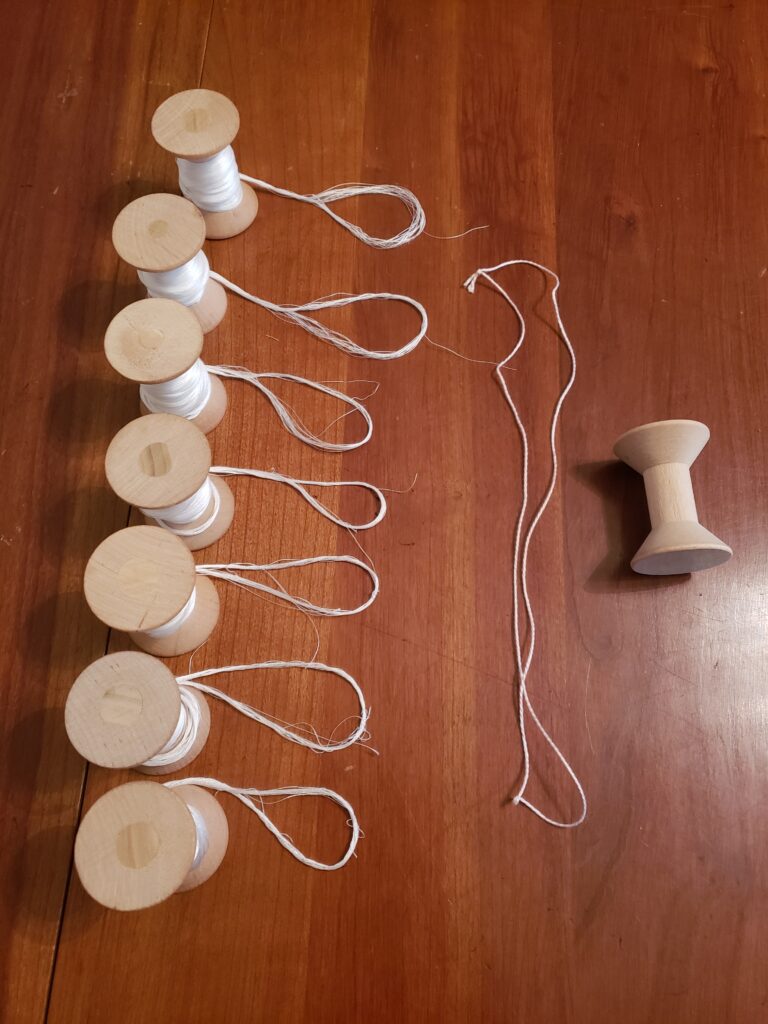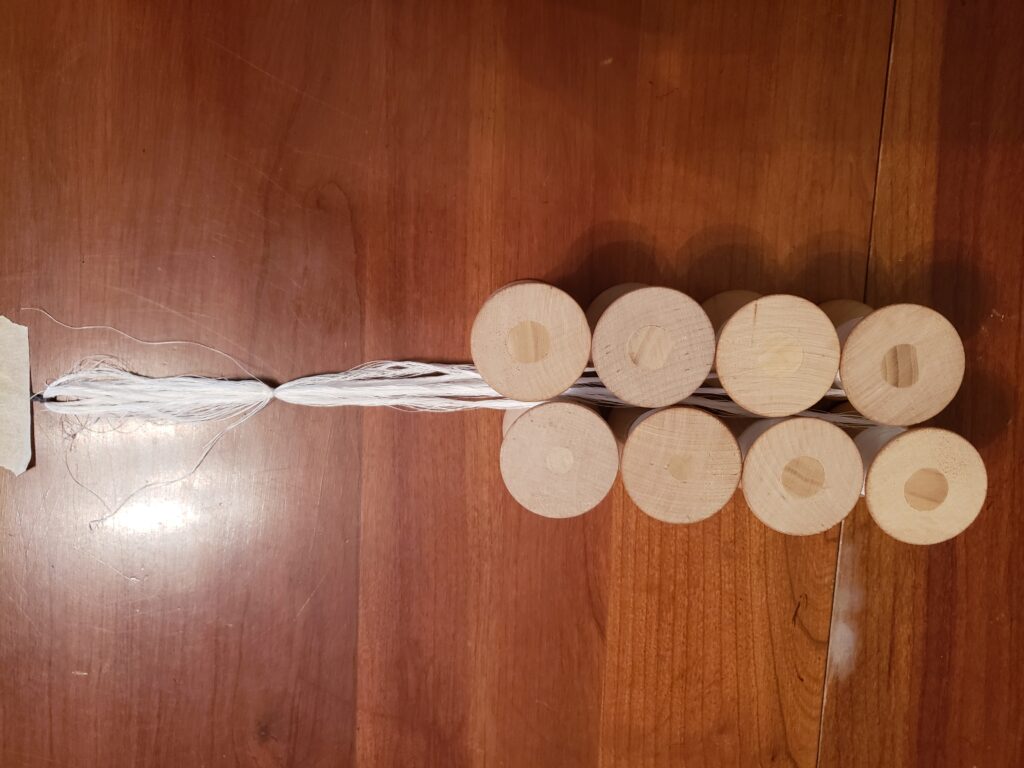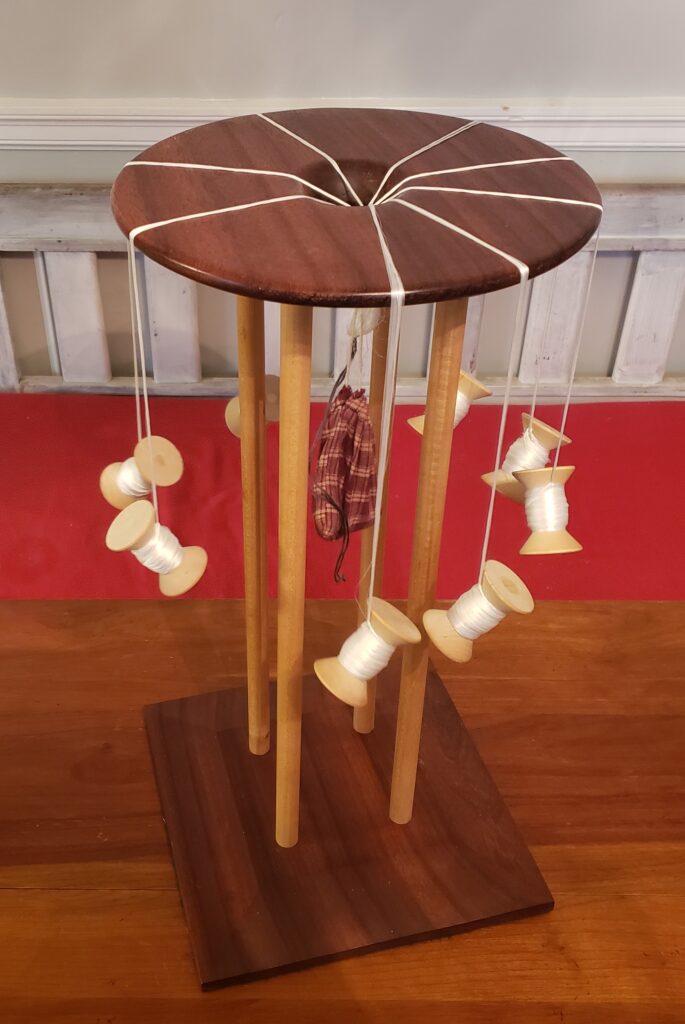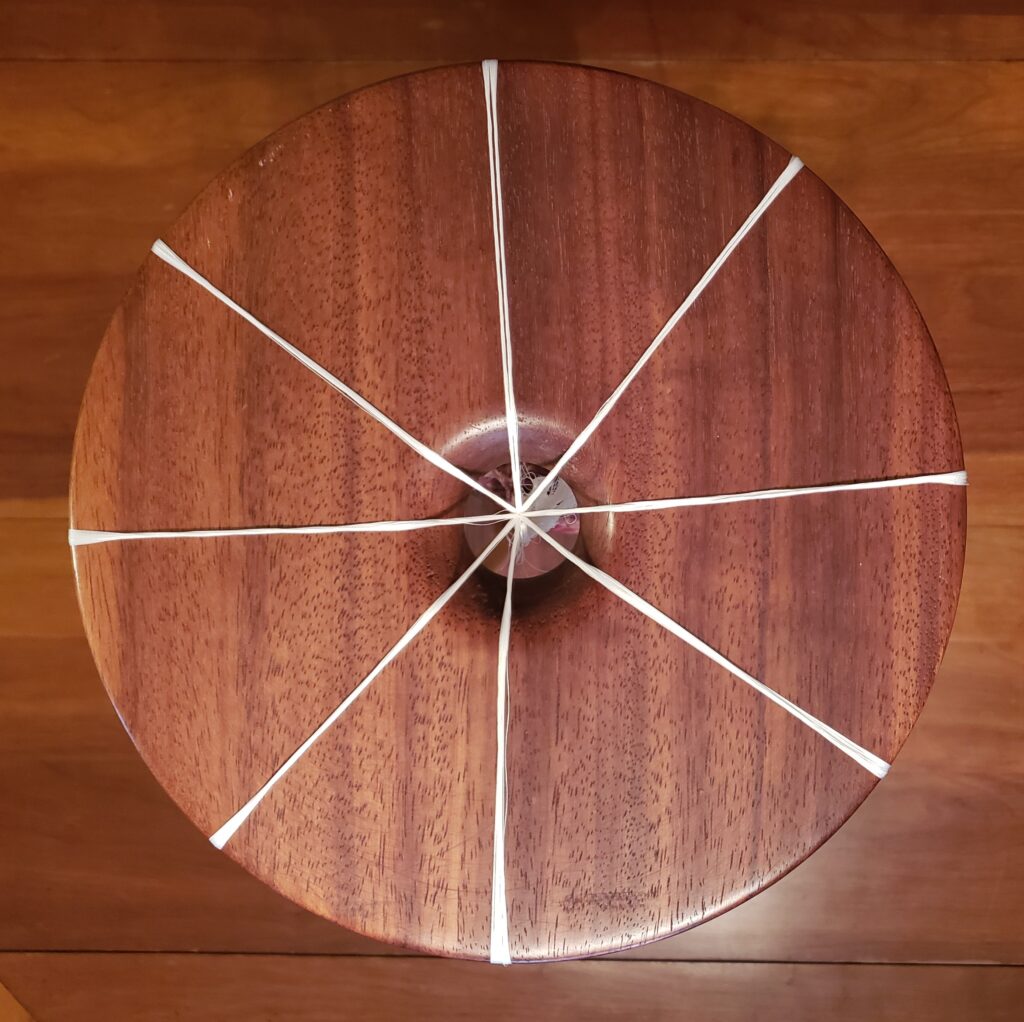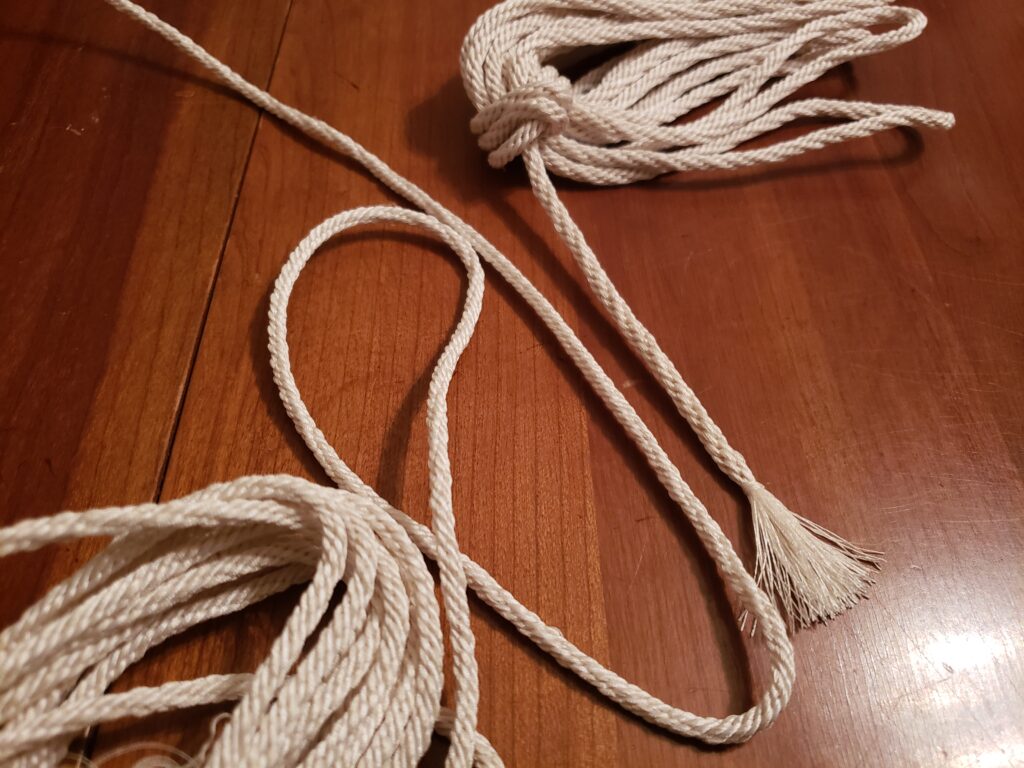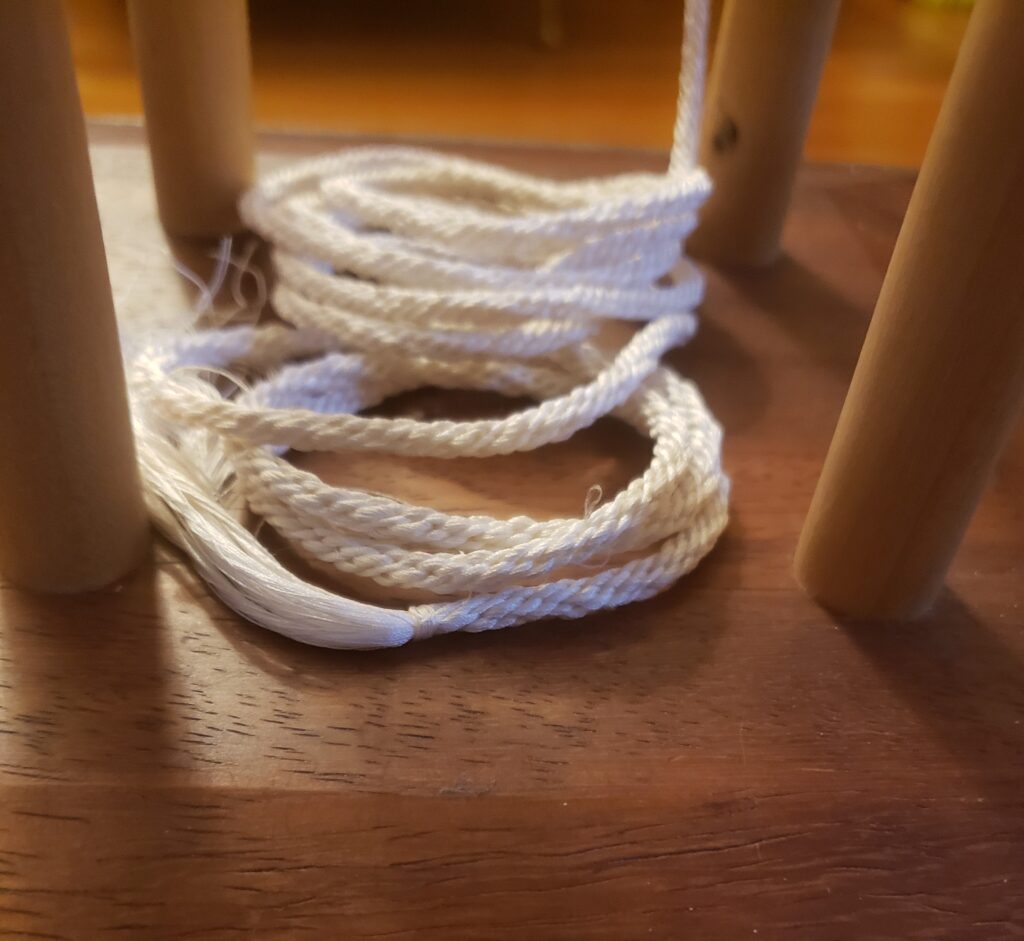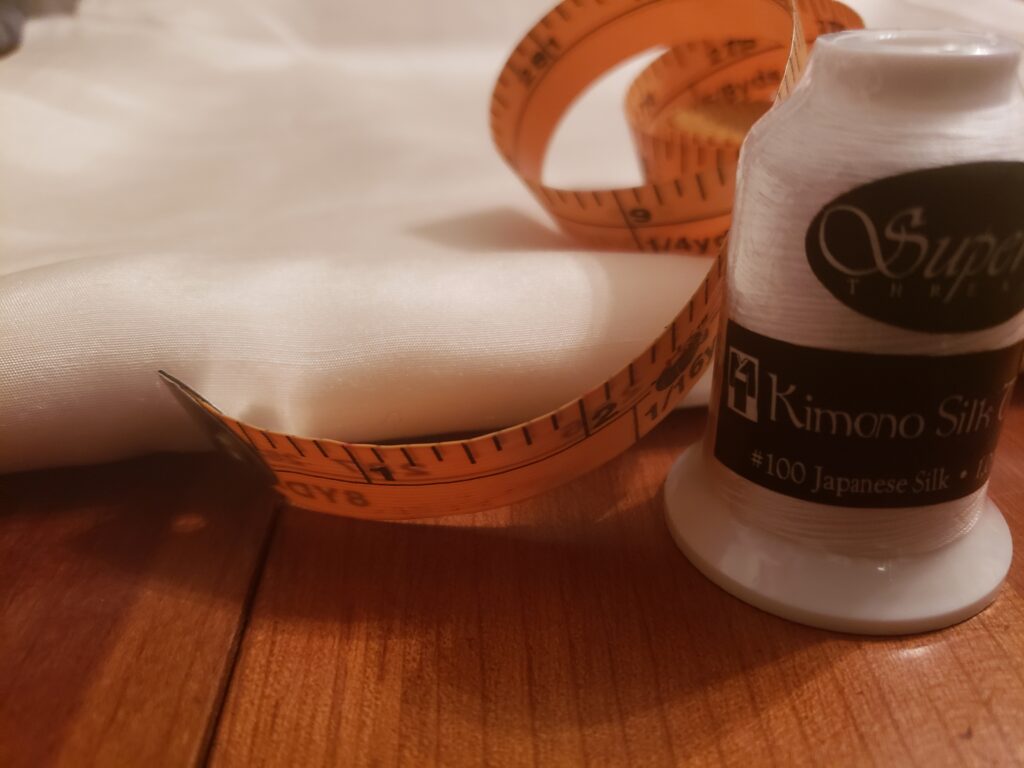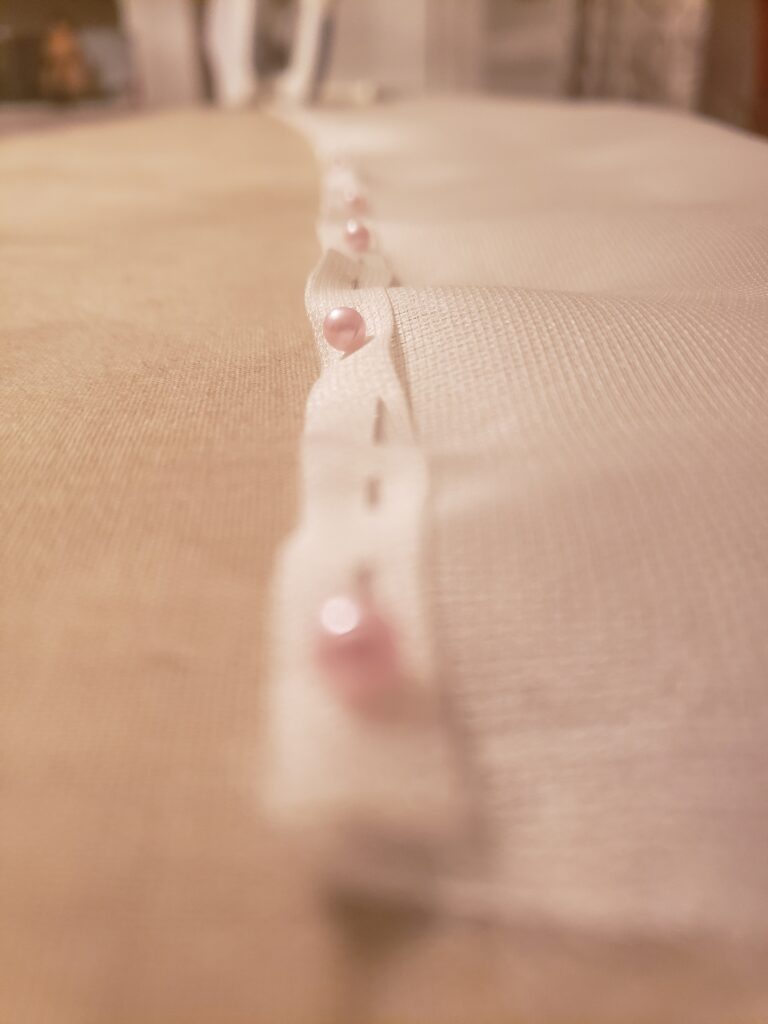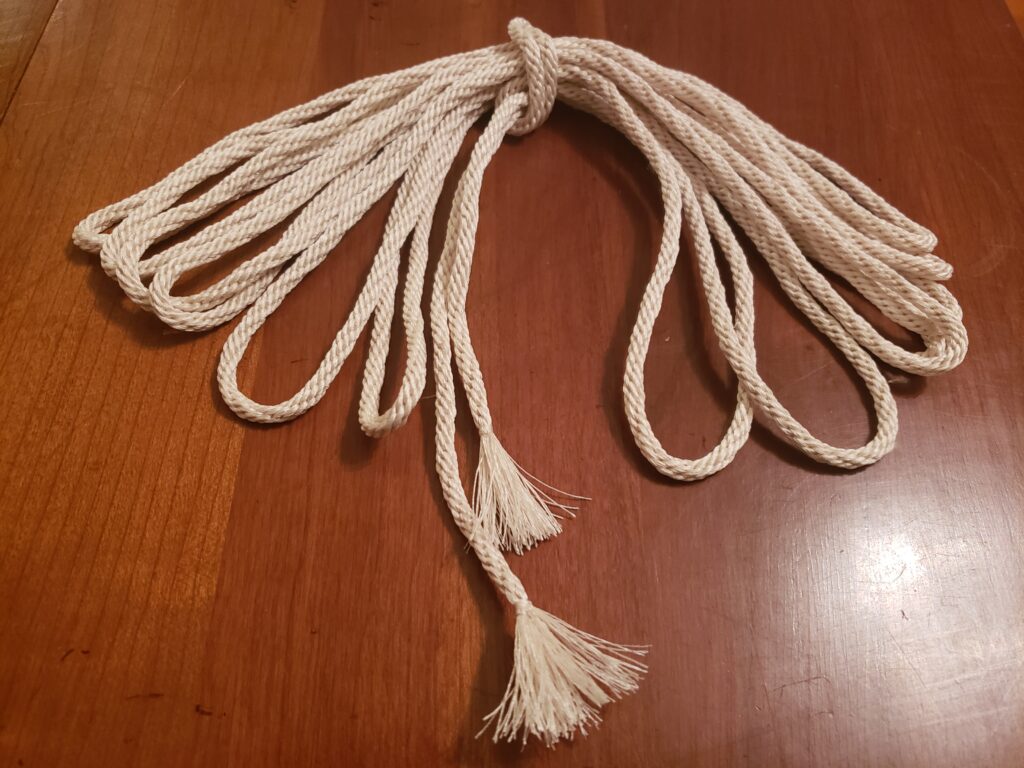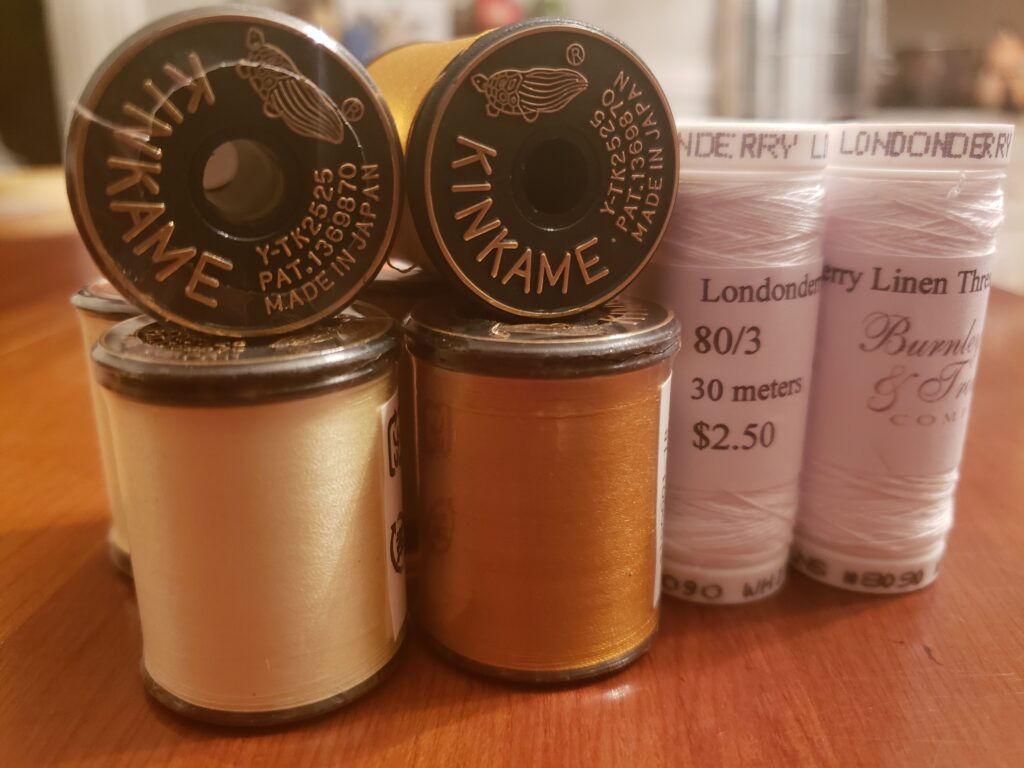Tonight marks 2 weeks of the Calontir Clothing Challenge.
I’m almost done with my Accessory Layer for C3. I’ve finished up the stitching on the last mushi no tareginu (hat curtains) panel. The 4 panels are also now attached to each other. All that’s left is to fold the top over (potentially stitch it) and attach them to the hat… 3 of 4 decorative cords are complete. 4 tama are wound. More silk thread (a spool more than I need) is on the way.
The silk thread for the uwagi (uppermost garment) lining arrived from Britex. One of the colors will work beautifully. I’m relieved.
Has anyone else noticed that I have deviated from the production schedule? Eh. I can’t remember how in depth I got about it. Well, I’m revisiting that tonight as it is more than obvious that I chose to finish the accessory layer rather than undergarment layer first. Oh well.
Here’s a lovely inspiration image:
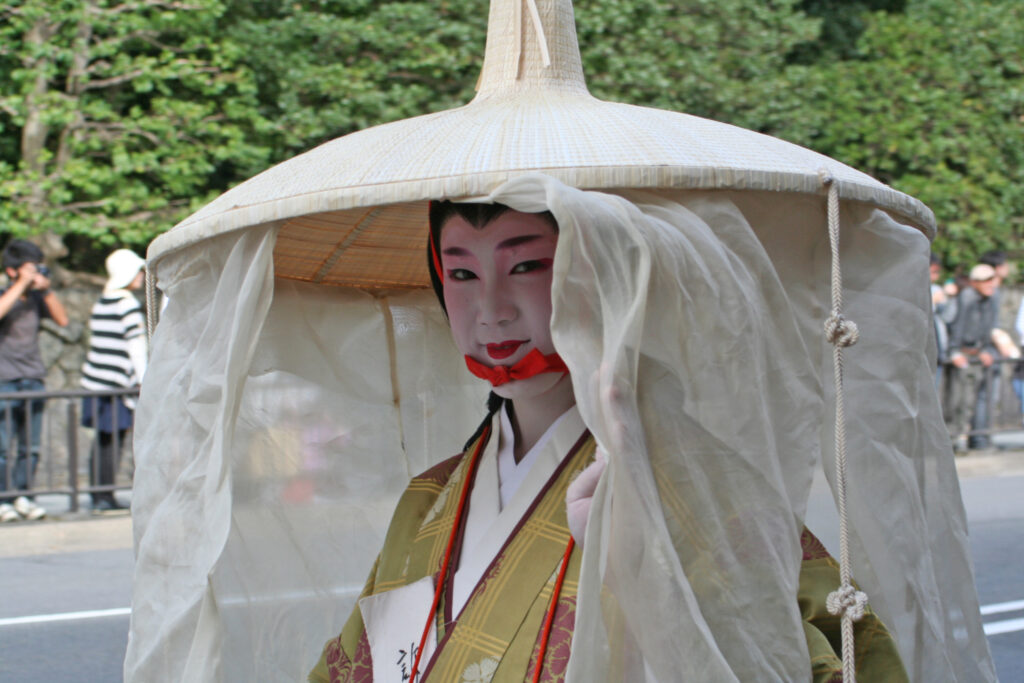
If you look over her shoulder, under the hat, you can see that the mushi no tareginu are folded over at the top. I’m uncertain if the fold over should be stitched down or not, but I don’t see visible stitching on the outside…
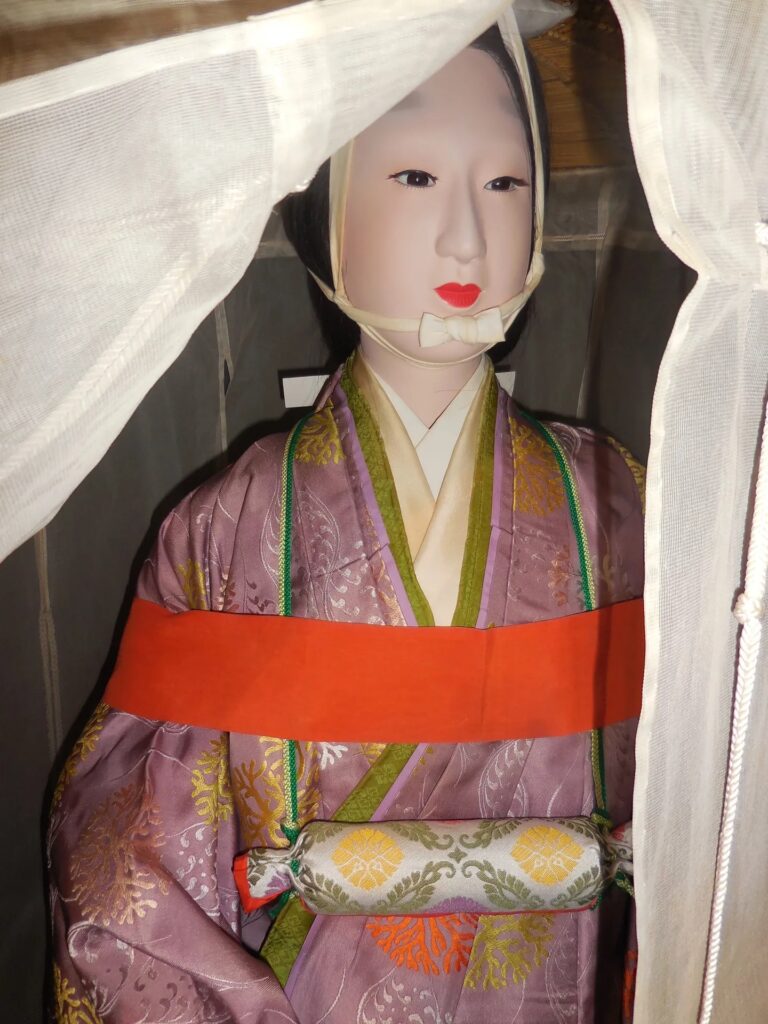
This image on the other hand, which is of my reference outfit at the Kyoto Costume Museum, appears to not only have the fold over stitched, but it almost looks like a channel with a cord running through it. But the decorative cords attach to the hat? Is it just a wide hem? Hmm. She’s also wearing one more layer than is labeled on the line drawing. See that cream colored collar? Things to ponder while I wait on supplies and move on to the kososde.

